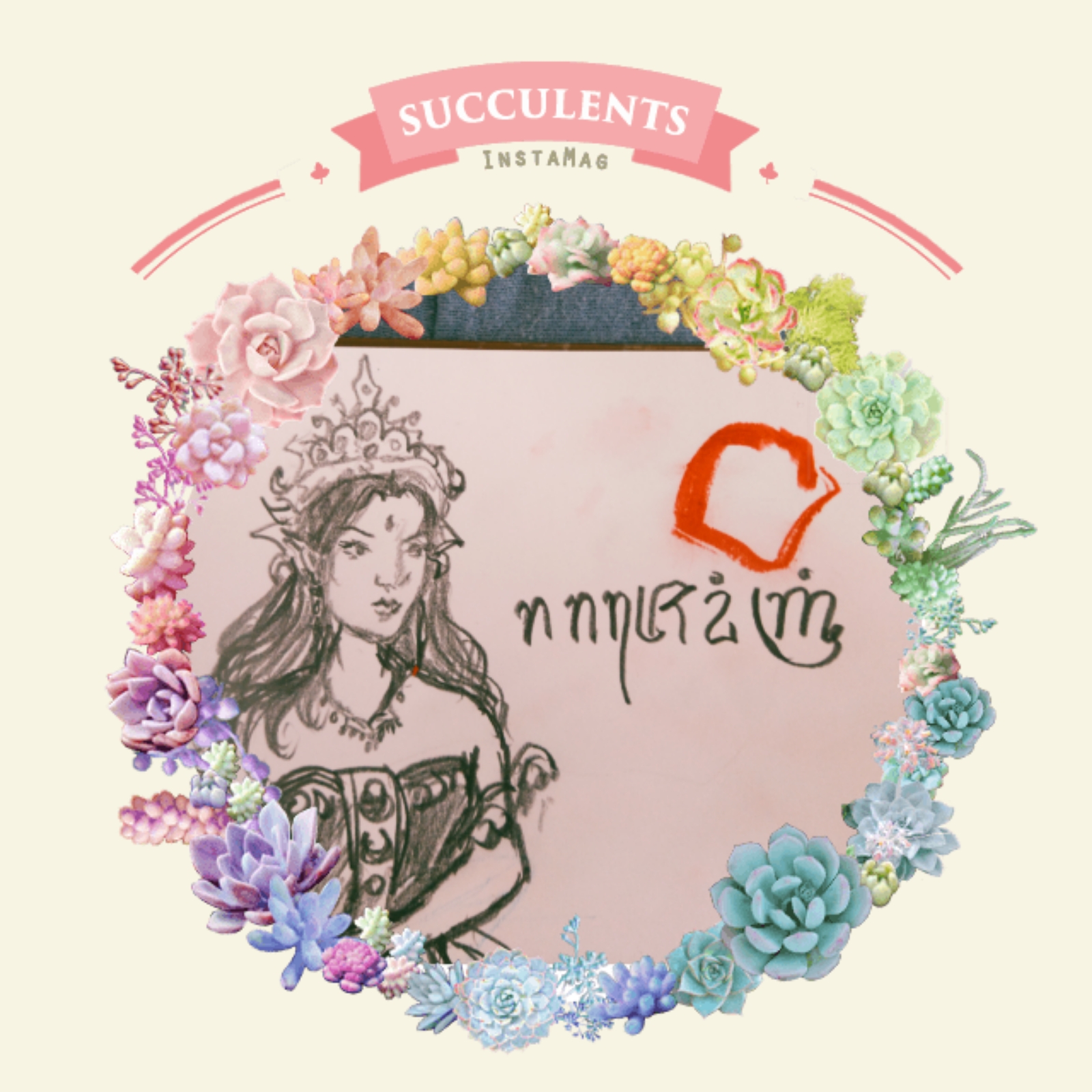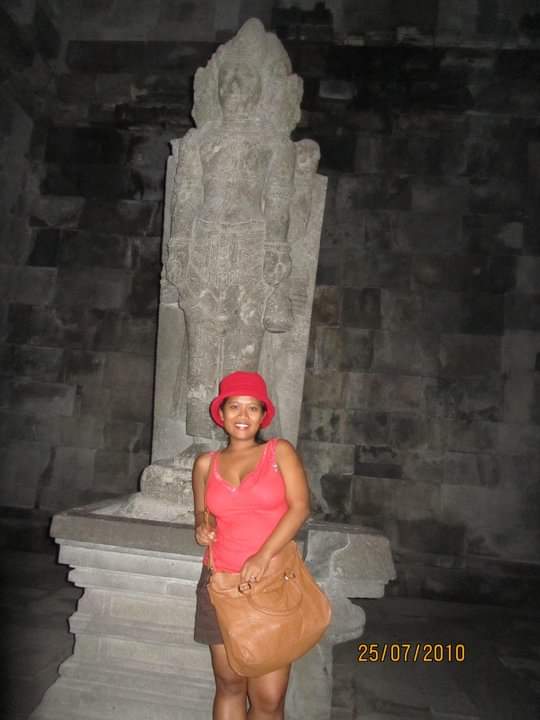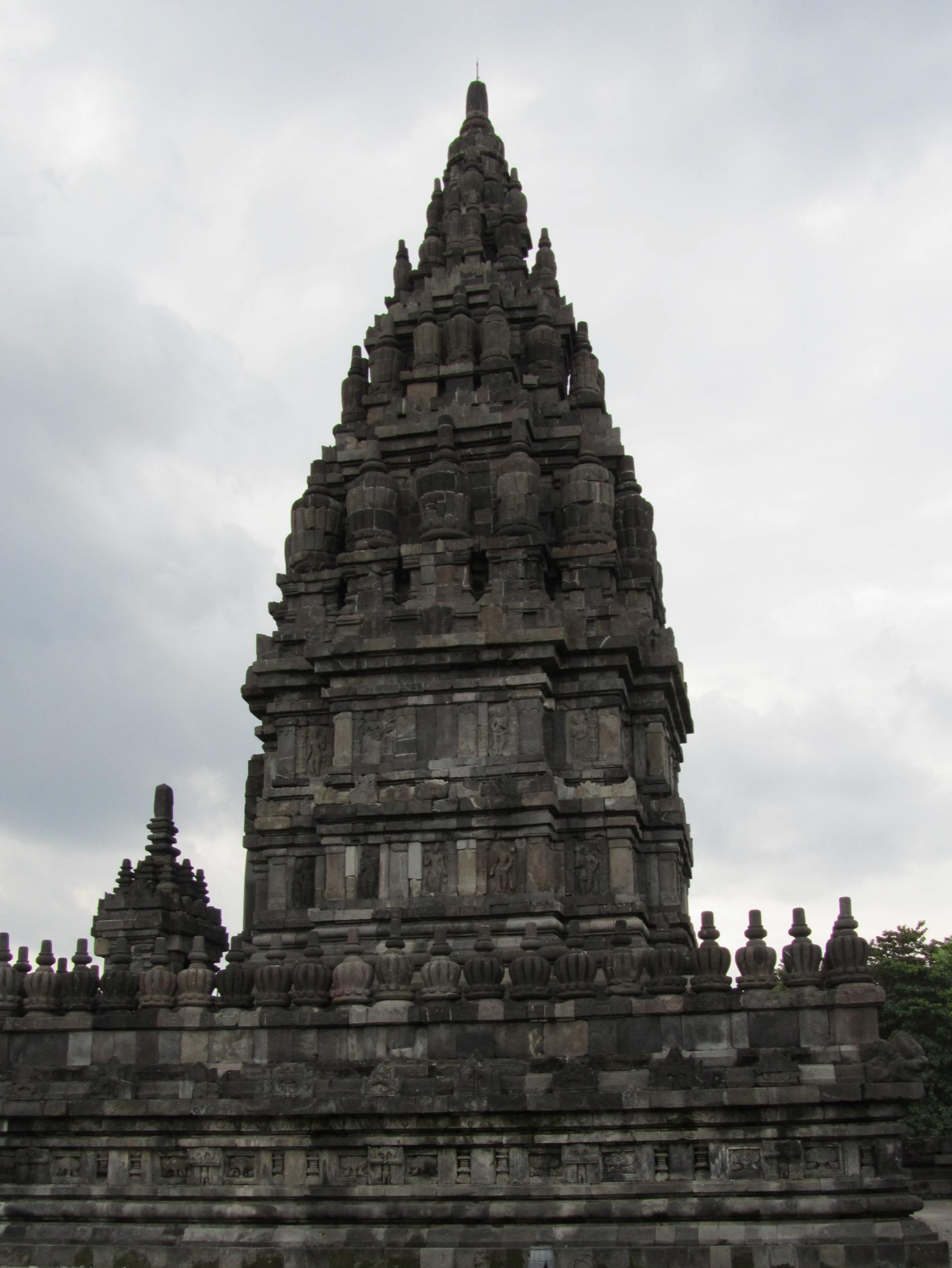Unlike many other famous Buddhists temple in the world, Borobudur is not a compound of few religious building, but a one single huge monument built on a hill surrounded by forest (originally … I m not so sure now if it is still can be called “forest”, more likely kind of coconut plantations, rice fields and some greeneries).Kedu plain, the surrounding area of Borobudur is a sacred place in Javanese culture and a very fertile agricultural area, thanks to four active volcanos around it (the beautiful twin Sindoro-Sumbing at the north-west side and the majestic twin Merbabu – Merapi at the north-east side as well as two big rivers “Elo and Progo”).
It was built merely by stacking stones and craving reliefs symbols on them as well es building statues and stupas, without any usage of cements nor any other kind of adhesive materials.
It is amazing that it has managed to survive few disasters, both natural and man made disasters.It looks beautiful from the distance, especially from above.To let you better visualize this description I have to get a picture of pixabay, because as a normal tourist without special tools it is rather impossible to take such a beautiful shot like this image 😅.
 This is one of sunset image at Borobudur, another one I picked up from pixabay.
This is one of sunset image at Borobudur, another one I picked up from pixabay. The rest of the pictures I would attach below are my private collections.
The rest of the pictures I would attach below are my private collections.History
It was unclear when exactly this temple was built, but from the language and things craved/written on the inscriptions mentioning about the spoken temple, the archeologists agreed that it has been built at the 9th century by Medang empire during the reign of Syailendra dynasty.It was believed to be built when the Samaratungga ruled the country and the construction was completed when his daughter Pramodhawardhani was on the throne.It has taken ca. 100 years to finish the construction project and even the architect “Gunadharma” wasn’t able to see the end result of his masterpiece.
Medang empire or also known as the “Ancient Mataram” empire was initially ruled by Sanjaya Dynasty with Hinduism as dominant religion, replaced by Syailendra Dynasty with Mahayana Buddhism as dominant religion and then replaced again by Isyana Dynasty who then moved the capital of the nation to the East Java. Isyana clans has again taken Hindu as main religion of the nation.However, considering the fact that some magnificent temples in Java to worship both Budha as well as Hindu’s Gods and Goddesses were built at nearly the same period of time, it can be safely concluded that Javanese have always been living in tolerance. The religion of the royals and aristocratic families didn’t hinder the citizens to practice different beliefs and to build God’s houses or artifacts.The historians believe that founder of Isyana Dynasty “Mpu Sendok” has moved the capital to the east because of the big eruption of Merapi, the most active volcano in Indonesia and also belongs to the group of most dangerous volcanoes in the world, which then caused Borobudur to be abandoned for centuries.Borobudur was buried by the eruption materials and then overgrown completely by plants. It was only during the British colonialisation under the reign of Sir Thomas Stanford Raffles who was interested in Javanese culture that Borobudur was found again at the year 1814. The first excavation was led by a Dutch engineer H.C. Cornelius but he hadn’t managed to find all part of the temple.
The project was slowly continued after the Dutch colonial came back to Indonesia. The Dutch had once gifted the Thailand King “Chulalongkorn” eight carts of statues and stones carved with reliefs during his visit to Java at 1896. Some of them are now preserved and displayed at the National Museum of Bangkok.The grand restoration project of the temple ruins has started at 1973 under Indonesian Government with the support of UNESCO and finally the beauty of Borobudur can be admired by everyone again. Since then the Buddhism rituals and pilgrimage have been done again there especially at the sacred days like Vesak celebration.At 1991 UNESCO has declared Borobudur as a World Cultural Heritage.
Until today Borobudur has survived some natural disasters like vulcan eruptions and earthquakes as well as thiefs and bombing incidents.
Aside of those, the carelessness of tourists also plays a role to speed up the deterioration of the temple. Ignorant tourists still often climb onto the stupas just for the sake of making selfies despite the explicit prohibition.
One statue and some stones were once falling down and broken because of such stupid actions.
Even ignoring the fact that the temple was constructed merely by stacking stones on top of one another and using: knobs, indentation and dovetails to attach the stones together, one should keep in mind that those stones are few centuries old already, they have been slowly wearing out.
Some of tourists even do vandalism. The last kind of offense was done out of carelessness and bad habit of littering around.
Some people might think that throwing away organic waste shouldn’t be that bad, however they often forget that when they throw away the seeds of fruit they ate, those can grow. Indonesia is very humid and fertile, especially in this area. It is often the case that plants are growing between the stones and it is destructive.
DESIGN
Borobudur is like huge mandala which describes the three realms according to Buddhist cosmology. It has 9 platforms divided into 3 basic parts, in which the base part called “Kamadhatu” (the world of desire) and the second part of the monument called “Rupadhatu” (the world of form) are in square shape with 4 entrances and the last upper three called “Arupadhatu” (the firmless world) is in circular form.The base square (ca 123m*123m) has been let burried, to help strengthen the foundation to support the weight of this huge step-pyramid temple.
Borobudur has no rooms for praying like other temples we have commonly known, but it is constructed in a way that it forms terraces and corridors. The daily life of javanese people at that era, the carmic laws, sacred figures in Buddhism and the biography of prince Siddhartha Gautama until he was enlightened and became Buddha are described in the 2672 reliefs panels.
Originally there were about 504 Budha statues but unfortunately some of them were either destroyed or stolen. Few of Budha statues have lost the head, stolen and sold abroad.
The total height of this monument is 42m, but since a part ofit is burried so the peak of the buulding is now recorded 35m above the ground level.
Travel Infos
This temple located on the hill at Magelang city, about 40 km north-west of Yogyakarta and quasi 100 km south-west of Semarang, capital of Central Java province. From Yogyakarta it would take about 1 hour drive by car to reach the temple, so the trip is not that exhausting.From Jogjakarta city center one can take the city bus to the suburb bus station Jombor and then continue the trip with a minibus to Magelang. The trip with public bus will cost you about 2 USD.
Grab taxi, tour service and car rental are the other options that we can choose.If you want to enjoy the magnificent view of sunrise from the temple, you’d need to wake up at 3am anyway if you decide to stay in Yogyakarta for the night instead of booking the luxurious Manohara hotel to stay for the night.
The tourists must buy the access ticket at this hotel in order to be able to enjoy sunrise or sunset at the temple, because both moments happen outside the opening hours.
You can get the details of the ticket prices for enjoying sunset and sunrise here!The normal ticket for visiting the temple is about 3,5 USD for adult Indonesians or PR holders and 25 USD for foreigners.Despite being the largest moslems population in the world Borobudur still generally sits on the top position of travelling list of Indonesians. The visit to Borobudur would normally be a main destination of most indonesian school trip in Java.
I had visited this site for the first time when I graduated from the elementary school, it was also a school excursion.
Unfortunately I don’t have any picture at all to commemorate that moments.
A camera was a luxury for me.
I again visited this temple, again with school colleagues in a school graduation trip. The third visit was the first time I travelled alone for my own leisure moment with my own money. If I remember it correctly, I was 23 years old at that time. The last trip I made to this temple was with my husband @jaki01.The pictures I share here were made during the last both trips.
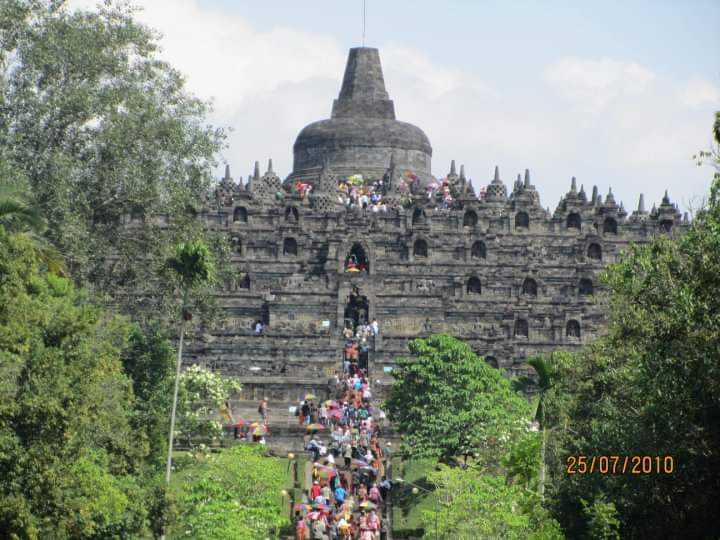






Fortunately I have scanned the picture before it’s destroyed by age. It has been 18 years since then.
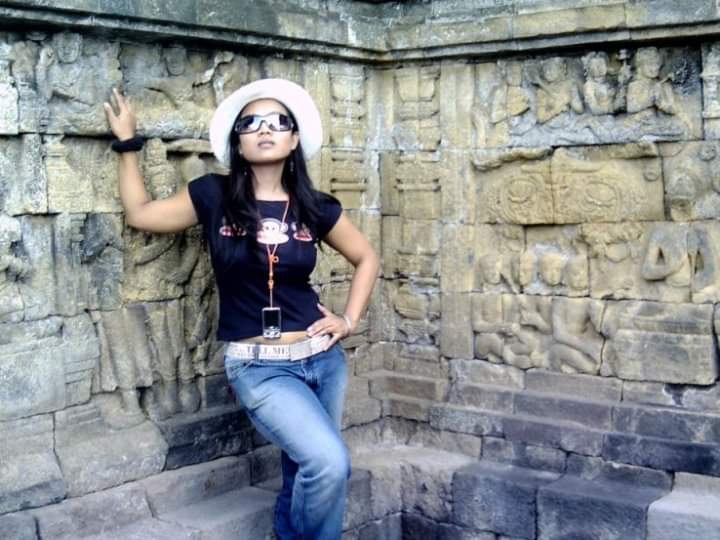
We made the trip to Indonesia exactly at our first anniversary. I already gained few kilograms more in this picture, but still quite presentable on the camera LOL.
How about now?? Please don’t ask the picture 😅😝!
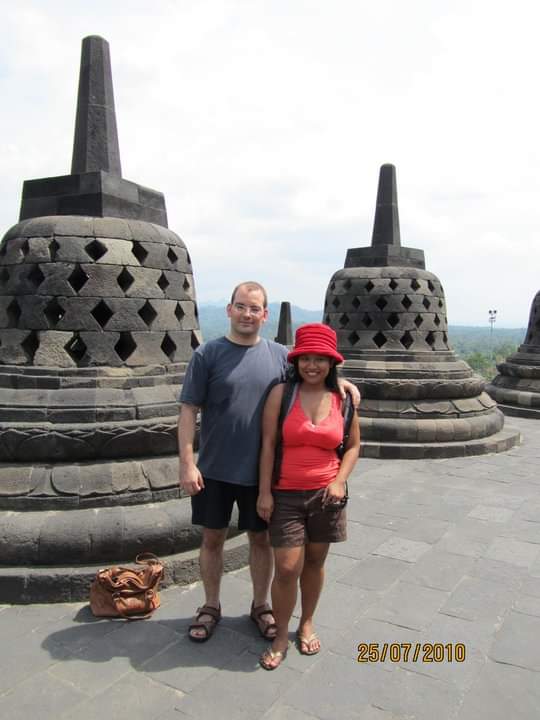
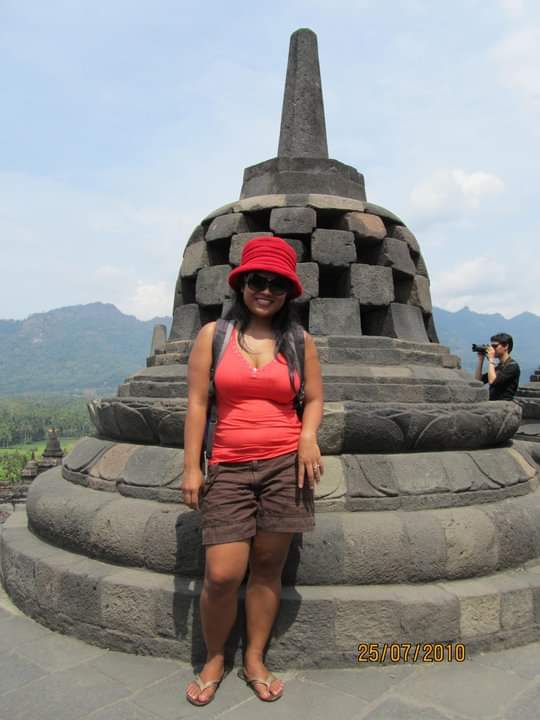
See ya!


